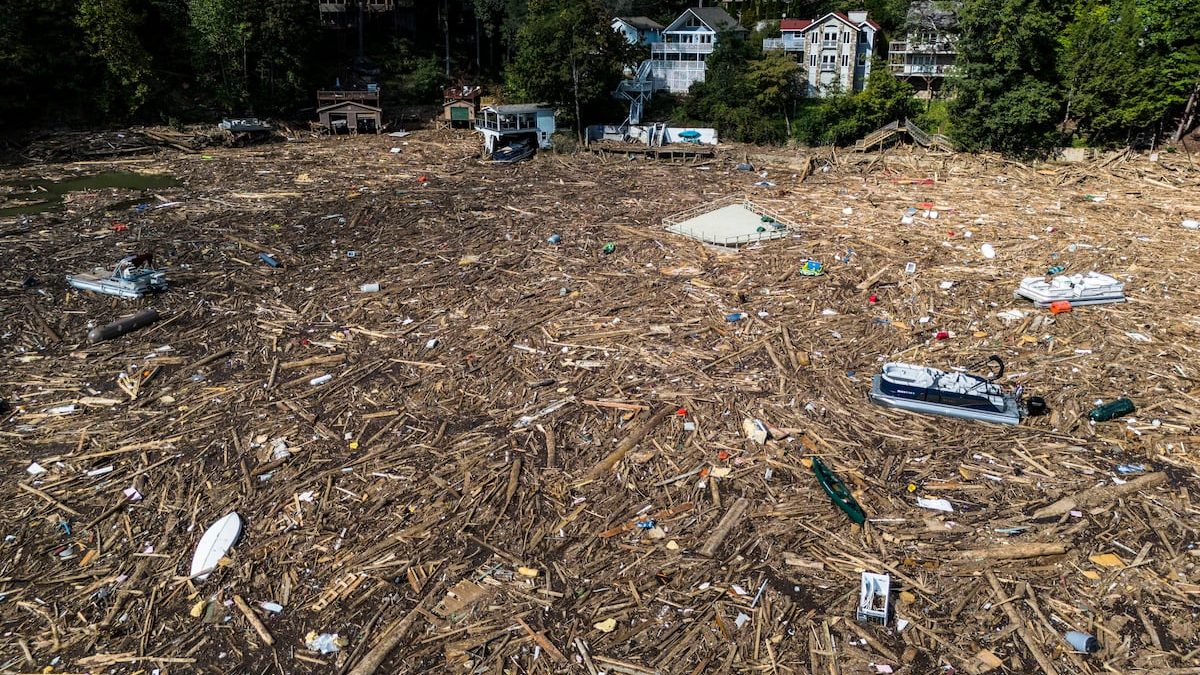The number of National Guard forces mobilized to help with Hurricane Helene relief efforts could continue to grow in the coming days as the scope of the storm’s devastation becomes clearer, military officials cautioned Thursday.
Nearly 7,000 Guardsmen and another 1,000 active duty soldiers have already been sent to communities across the Southeastern United States to conduct search-and-rescue missions, clear damaged roads and transport aid to hard-hit areas.
Maj. Gen. Win Burkett, director of domestic operations and force development for the National Guard Bureau, told reporters that military officials are continuing to coordinate with state officials to best respond to their needs.
“As the states determine that they need more capability, or they need to start replacing some of the formations that they have, then we’re going to provide that,” he said. “We’re going to continuously look for solutions that would enable that as quickly as possible.”
RELATED
Guard and reserve forces from 16 states are involved in the response to the hurricane, which has killed at least 191 individuals in six states. More than 40 rotary wing aircraft and 600 military vehicles are assisting local emergency personnel with their work.
According to state officials, about 1 million homes are still without power, and many residents in mountainous areas remain trapped due to mudslides and washed-out roadways.
Officials in South Carolina are already expecting to need additional forces for relief efforts there. About 1,000 military personnel are currently operating there.
“The main effort right now has been debris clearing. … We work in concert with the power companies to ensure they can have access to the locations they need,” said Col. Jason Turner, director of military support for the South Carolina National Guard. “But clearing the roadways is the first and foremost priority for the state, and then establishing communications.”
Col. Paul Hollenack, commander of the North Carolina National Guard’s 30th Armored Brigade Combat Team, said forces there have delivered about 1 million pounds of emergency supplies in the week since the storm struck the state, and more than 500 people have been rescued by military specialists.
“And we are still doing significant flight operations in support of search and rescue at this point,” he said.
Burkett warned that additional bad weather could complicate those efforts and extend the domestic military missions.
“There’s another system that’s making its way into the Gulf now,” he said. “It’s not completely formed, and even if it doesn’t form, if it turns into a rain event, it could exacerbate the recovery operations.”
The Guard leader said he has been impressed by the military’s response thus far, but noted the level of destruction was unsettling.
“It’s a really dangerous environment,” he said. “I wouldn’t say that it was worse than what people thought was possible, but I think you really don’t get a feel for it until you get out and see it. That’s what makes every storm and every response unique.”
Leo covers Congress, Veterans Affairs and the White House for Military Times. He has covered Washington, D.C. since 2004, focusing on military personnel and veterans policies. His work has earned numerous honors, including a 2009 Polk award, a 2010 National Headliner Award, the IAVA Leadership in Journalism award and the VFW News Media award.
Read the full article here


